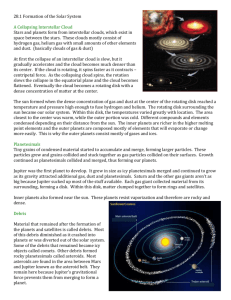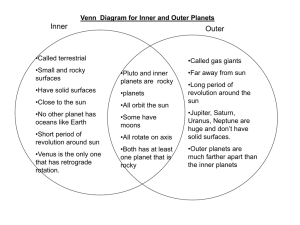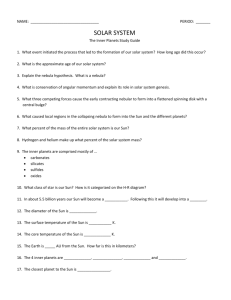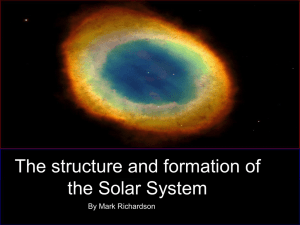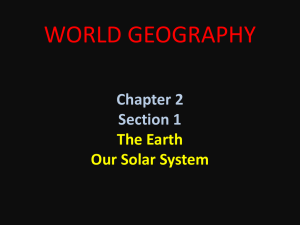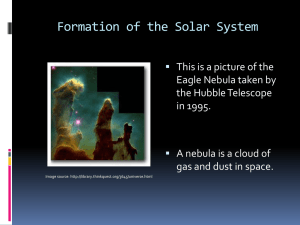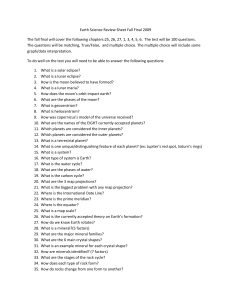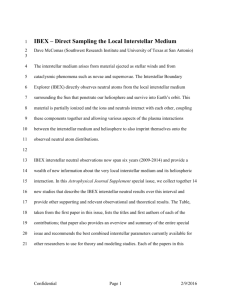Notes Outline Part 4
advertisement
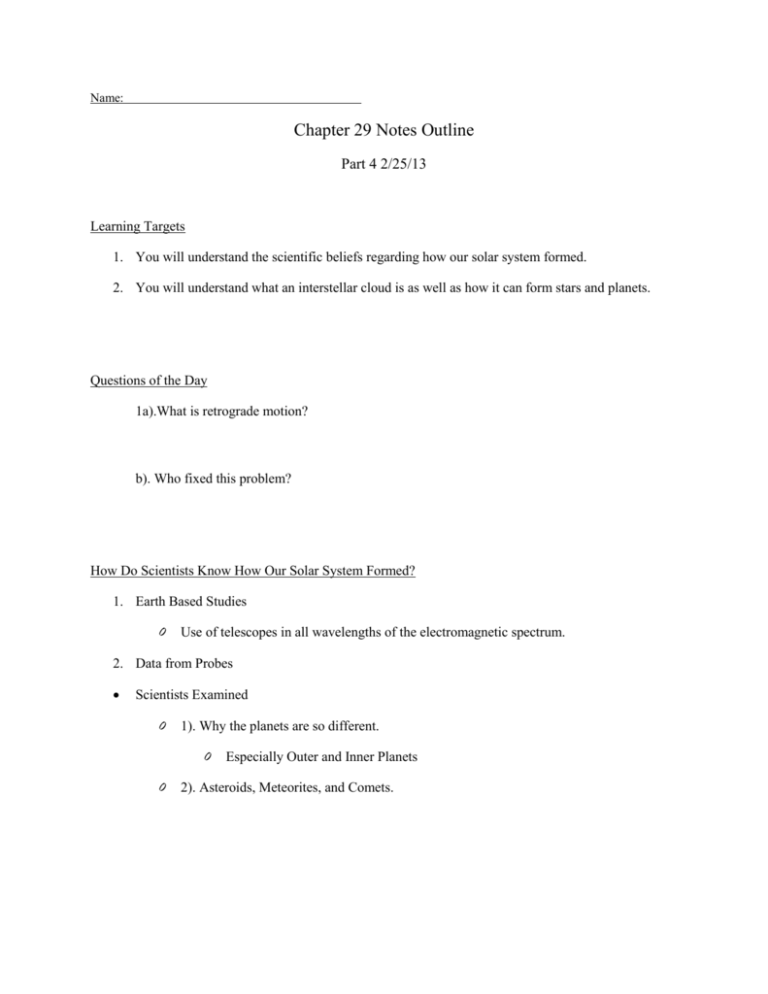
Name: Chapter 29 Notes Outline Part 4 2/25/13 Learning Targets 1. You will understand the scientific beliefs regarding how our solar system formed. 2. You will understand what an interstellar cloud is as well as how it can form stars and planets. Questions of the Day 1a).What is retrograde motion? b). Who fixed this problem? How Do Scientists Know How Our Solar System Formed? 1. Earth Based Studies 0 Use of telescopes in all wavelengths of the electromagnetic spectrum. 2. Data from Probes Scientists Examined 0 1). Why the planets are so different. 0 0 Especially Outer and Inner Planets 2). Asteroids, Meteorites, and Comets. Formation of Our Solar System Interstellar Clouds = Huge Clouds of and 0 Made of 0 Form Stars and Planets 0 Usually look dark because the dust blocks and 0 Like 0 Stars behind this cloud can’t shine through it. 0 0 0 in Space . But….Sometimes the light from stars within the cloud causes these interstellar clouds to glow. Location 0 There are many interstellar clouds found within our . 0 We look for high amounts of gas and dust. Collapsing Interstellar Cloud 0 When enough gas and dust is present, scientist think these interstellar clouds will condense because of . 0 0 Can form a star or planet Cloud begins collapsing slowly. 0 The smaller it gets the faster it begins to 0 This spinning motion with eventually form a rotating disk with a very dense center (core). Understanding Check: Flip this notes outline over and write down as many facts as you can about interstellar clouds without peeking. Formation of Our Solar System Continued 0 Scientists believe that one huge interstellar cloud called the formed the Sun and all the planets. 0 The Sun formed first in the center of this cloud. 0 Fits with why our Sun is the thing in our solar system. 0 In the center of the cloud it was the 0 On the edges of the cloud it was the 0 and most This difference in temperature as the solar system cooled caused materials to condense and be located in very narrow regions of the solar system 0 This is why we see inner planets and outer planets have such different composition. 0 Lab: Composition of the Planets Development of Planets 0 0 1st planet of the gas to form was 0 This is why Jupiter is the largest. 0 Had the most materials to build with Then Saturn, Uranus, and Neptune formed 0 Not as large because Jupiter hogged most of the materials; gas, dust, and ice. 0 Leftovers became 0 Inner planets were forming from the . 0 Made of very different things 0 More 0 0 Once these materials condense out they begin to collide and stick together. 0 Keep growing larger until they form Planetesimals = Objects 100’s of km in diameter 0 To produce planets, planetesimals must Development of Planets 0 0 0 Sun took all the gas and floating debris away from the inner planets. 0 Why they are 0 Why Moons are Terrestrial Planets = 0 Closest to the Sun 0 Mercury, Venus, Earth, and Mars 0 Close to the size of Earth 0 Solid, Rocky Surfaces Gas Planet = 0 Farthest from the Sun 0 Jupiter, Saturn, Uranus, Neptune 0 Larger 0 More Gaseous 0 Lack Solid Surfaces for inner planets.
